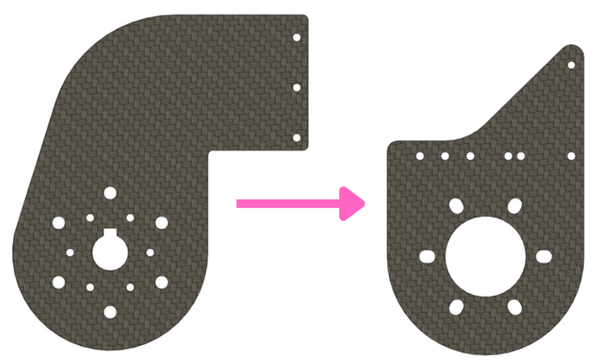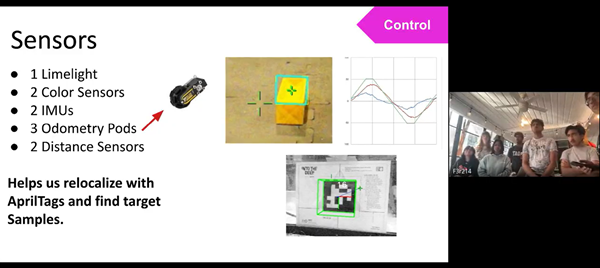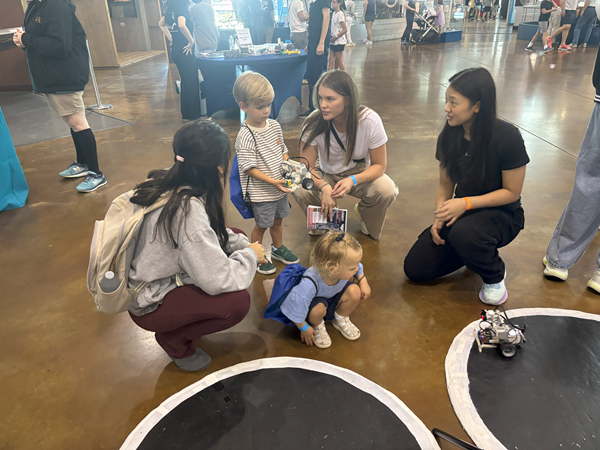22 Feb 2025
Post 19
Awards: journal
NTX Area Championship Review
By Anuhya, Krish, Jai, Sol, Aarav, Fernando, Ren, and Nalin
Task: Analyze our performance at the NTX Area Championship

Today, Iron Reign participated in the NTX Area Championship. Robot-wise, we performed quite well, winning 6 out of 7 matches and becoming the 4th seed in the Ruby Division. In playoffs, we made it to match 8, where we lost to the 1st seed alliance. Awards-wise, we unfortnuately did not win anything and were unable to qualify for the World Championship.
Match 4: 176 - 137 Win
We started on the sample side, but unfortnuately, our color sensor died and we missed a yellow sample. We only scored 1 sample in auton, but in teleop, we cycled 7 samples between the Sub and the high basket. However, we lost some time at the beginning of Teleop because we had to reset our arm to get the color sensor on Sampler to work properly, which cost us 1 sample.
Match 11: 237 - 99 Win
We only scored 2 samples in Auton and struggled to pickup samples from The Sub. We were planning to rebuild the Sampler to improve its ability to pickup samples from The Sub but ultimately moved on to focus on other tasks before Regionals. Because of our struggles picking up samples from the Sub, we only scored 2 samples in the high basket in Teleop. In endgame, we also scored a Level 1 Ascent.
Match 14: 161 - 129 Win
Our reliability issues continued to plague is in this match as well. We had to reset our arm at the start of teleop and Sampler still took long to rake in Samples. However, when scoring the Samples, our arm did not reach high enough and ended up crashing into the basket itself, leading to missed Samples. We ended up scoring only 5 samples and a Level 1 Ascent in endgame.
Match 23: 133 - 196 Loss
We scored a totoal of 7 samples on the high basket, but struggled with the same problems as before. We also had to reset our arm at the start of teleop, which cost us a sample. We also switched to Robot Oriented Drive instead of a Field Oriented Drive to improve the driving experience.
Match 27: 150 - 149 Win
In Auton we scored no specimens and we had a 10 second delay at the start of Teleop. We struggled to pickup the proper colored Samples for Specimen conversion, but anaged to score 2 specimens on the high chamber. However, we ended up losing by 4 points due to a multiple posession penalty. While we were moving to score a Specimen, our robot caught onto another Specimen lying on the ground and pushed it towards the baskets. However, we argued that because Specimens could not be scored in the baskets, we gained no advantage and thus the penalty should not be applied. The referees agreed and we were not penalized, which resulted in us winning the match.
Match 33: 222 - 104 Win
This match, we started on the Specimen side and struggled to score Specimens in Auton because the Speciminer kept dropping them immeditely after wall pickup. We needed to improve the grip strength of the Speciminer to prevent this from happening in the future. Luckily, we were able to still score 3 specimens on the high chamber.
Match 40: 158 - 134 Win
Our auton stopped prematurely on the Specimen side, and we recieved a penlty when our motor moved during the transition phase. We still struggled to consintely scored Specimens and ended up only parking in endgame.
Playoff Match 1: 167 - 298 Loss
We scored 2 Samples in Auton and 6 Samples in the high basket during Teleop. This was a solid performance, but just was not enough to win the match.
Playoff Match 6: 227 - 178 Win
We scored 14 Samples in the high basket. Our opponents disconnected in Auton and were unable to catch up to us in Teleop. This win kept us alive in the playoffs.
Playoff Match 8: 181 - 361 Loss
We scored 1 Sample in Auton and 8 Samples in Auton, but were unable to keep up with the 1st seed alliance. We ended up losing this match and were eliminated from the playoffs.
Takeaways
Our final ranking was probably higher than our actual performance thanks to favorable matchups, but we still performed pretty good overall. We need to work on our reliability and Sampler's ability to pick up samples from The Sub. Award-wise, we did not win anything even though we had a solid judging interview and a couple of callbacks. Even though this is the end of our season, we are hopeful that there will be a UIL compeition for us to work towards.


































